By: Laughing Gravy 2
|
They were the hardiest of breeds.
As Lewis and Clark's Corps of Discovery embarked on their famous journey to explore the newly acquired Louisiana Purchase for President Thomas Jefferson (and quite likely do a bit of spying on the British presence in contested areas), they ran into white men returning from trapping grounds as yet unknown. While they had only ventured a short distance into the interior when compared to the immensity of this new acquisition, they told of places rich in fur. At the time, the best hats were constructed of beaver fur (the better hats today still are). Not only the very fashionable, never-be-seen-on-the-streets-of-any-US-or-European-city-without-one top hat, but even the more common and ladies' hats of the day. As such, fur-trapping lands, especially those rich in beaver, were extremely important to the economies of the great nations of the period. >From these circumstances arose the hardiest group of men to ever roam any wilderness. A uniquely American group, as other nations traded with Indians for their furs, giving rise to another economic boom phenomenon of "trade items". Known best today as "Mountain Men", they called themselves "Mountaineers", "Trappers", and even "Beaver Men". These brave souls would commonly be recruited and assembled from the various US States at their point of departure in Missouri. They signed on with fur companies, and as such, became employees of said concern and had to sell their furs at company prices (usually amounting to pennies on the dollar for their trouble) and also replenish their supplies at inflated company prices as well. This led to most being far in debt to their respective companies. Some, though few, became "free trappers". These were men "on their own hook", or free agents, if you will. They were free to sell and buy at the best prices they could find. It is critical in the study of these men to keep in mind that once leaving civilization (read; Missouri and points east) to the beaver rich West (especially the Rocky Mountain region), they found themselves hundreds of miles from a settlement, a doctor, or even protection. They relied on their own "brigades" to protect each other. They learned to live with the land, rather than in spite of it, adapting to their environment like natives. The iconic image of the lone trapper is mostly myth, as travelling alone in a wilderness where even a broken leg could mean certain death would have been (and still is) foolhardy. Conservative estimates place the survival rate at one-in-ten for their first year out. Those that made it past that had endured and passed their baptism of fire. All while surrounded by hostiles, mankilling beasts, and in a land of extreme weather and hardship. It all came to a close with two factors in about 1840; beaver were disappearing- harvested to near extinction, and the advent of a more efficient way to process silk for, in this instance, top hats. Basically, the end for the trapper came because fashion changed. Beaver top hats were oh-so "yesterday". Silk was the new got-to-have-it hat material. The also-iconic image of the trapper bedecked in hat made from the fur-on entire hide of an animal, wearing Indian warshirt decorated in elaborate beadwork, and so many other impediments to everyday life and hard work is, unfortunately, also mostly myth. This was propagated by artists who came much later after the fur trade era. Artists such as Remington made great use of the "Mountain Man" as their subjects. In Remington's case, for example, one can clearly see repeated use of many of his studio props in his works. Remington never saw a trapper at work. There is only one artist known to have attended a fur trade "Rendezvous" (a yearly gathering, in the Rockies, where pack trains from back east convened and the trappers showed up to sell/trade/party/play/hoot/holler/gamble/drink/socialize/womanize[Indian women] and anything else that can come to mind). When William Drummond Stewart, a wealthy nobleman from Scotland arrived in America for his adventure junket, he enlisted a Baltimore portraitist named Alfred Jacob Miller to accompany him into The West to record the adventure. There, they spent much time with many fur trappers, observing and recording their day-to-day lives and attending rendezvous. Miller's sketches, and subsequent paintings, are a storehouse of valuable information and images on the subject. Miller captured in his images these trappers wearing the sturdy clothing and accoutrements needed in this unforgiving wilderness. Usually slouch hats, in every stage of distress, topped off an outfit made of deerskin which had replaced long-worn-out "civilized" clothing. If the individual was handy, he could fashion himself his own garments. If he was able, he could pay an Indian woman to do it for him. At any rate, bearing in mind the social mores of the day, these men, hard as they were, still stuck to the cut and fashion they knew. A used cloth coat was used as a pattern to create a deer or elk skin one. Trousers, the same. It was very rare to see a white man go native in his dress. A common nod to the adaptability of these men was their quick acceptance of the various types of native footwear. Moccassins were cheap and easy to replace; boots, not so much. A man in and out of waist-deep water all day setting beaver traps certainly doesn't want to be wearing boots. It is well-documented in journals that, upon returning to "civilization" these men usually re-acquired cloth garments as soon as possible. Kit Carson is known to have favored velveteen and satin at times in his choices for trouser material when back in the settlements. Most trappers also tried to keep themselves cleanshaven, as their encounters with Indians usually went better when not appearing as "dogfaces" (Indian women preferred men who resembled their own non-bearded tribesmen). Some wore beards from necessity, after losing their coveted razor, or just by choice. Enough rambling. I can talk about this all day, unless somebody shuts me up, and still have barely touched on so many parts of the subject. I have pursued, studied, and lived much of this lifestyle for over 25 years, and can say I haven't even scratched the surface of what these men endured. Here are my guys. I'd have to say I rank the one as in the top three of the figs I have ever made. I hope you all enjoy, and feel free to ask any questions. |
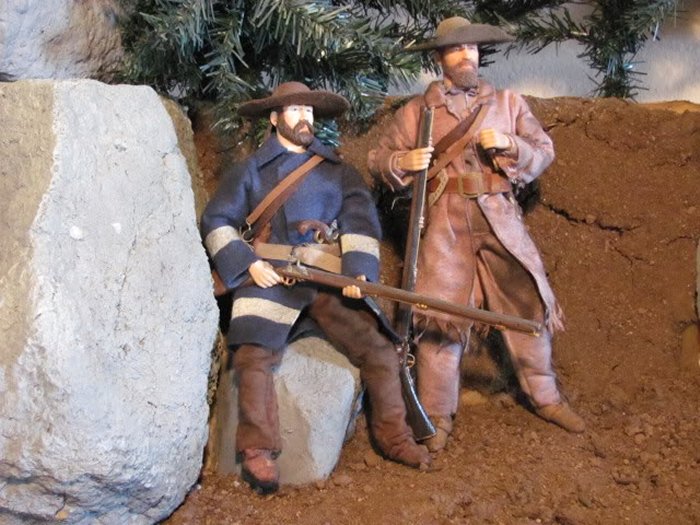
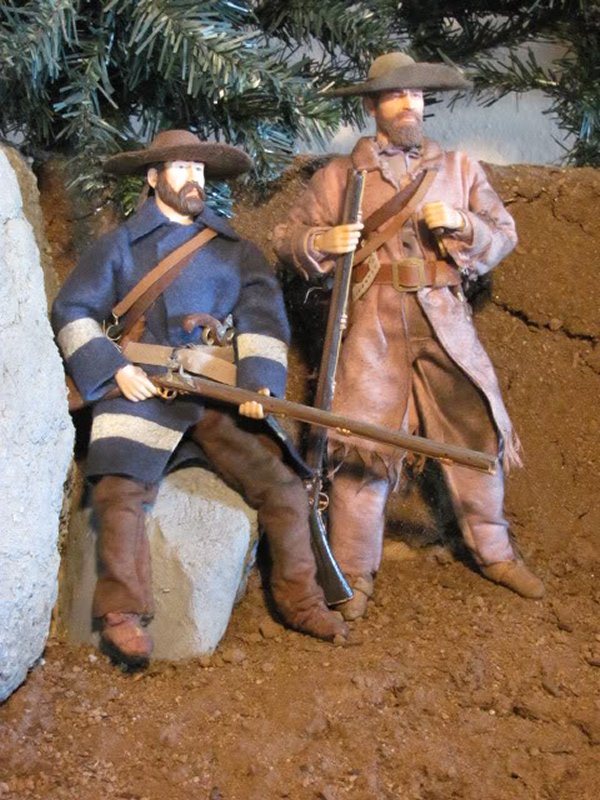
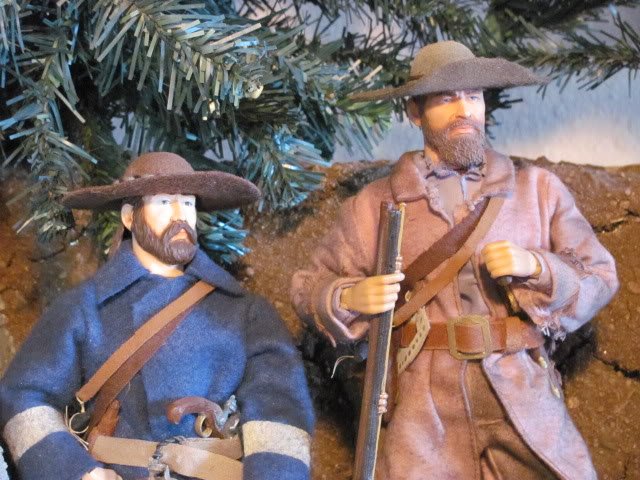
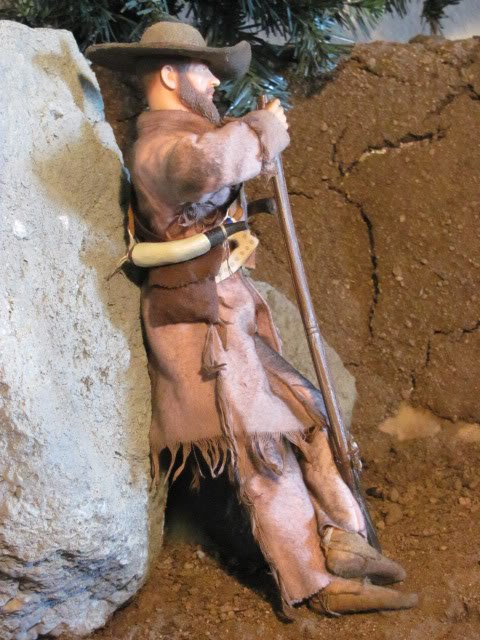
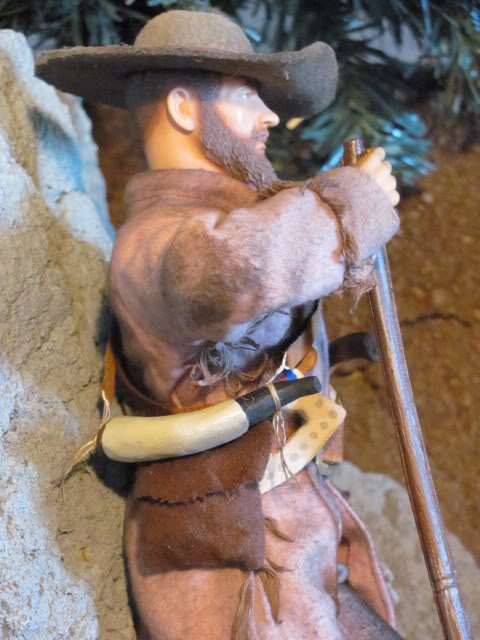
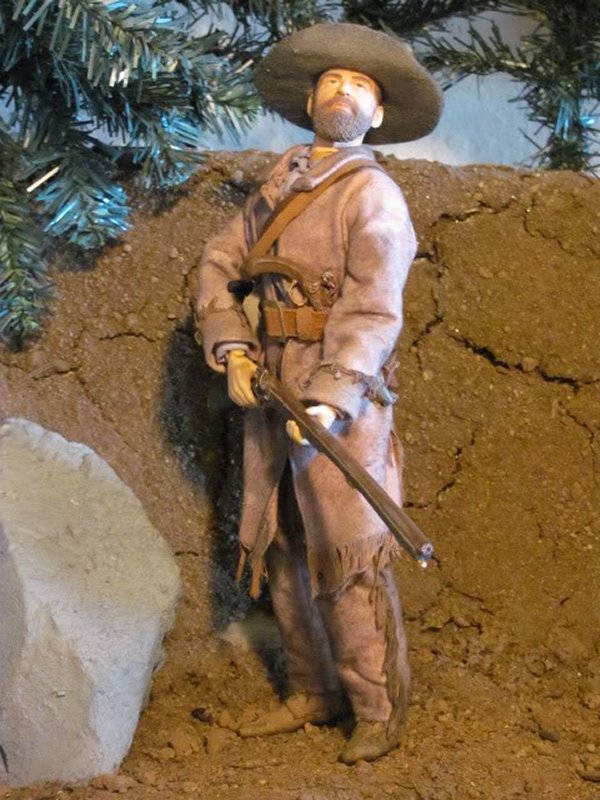
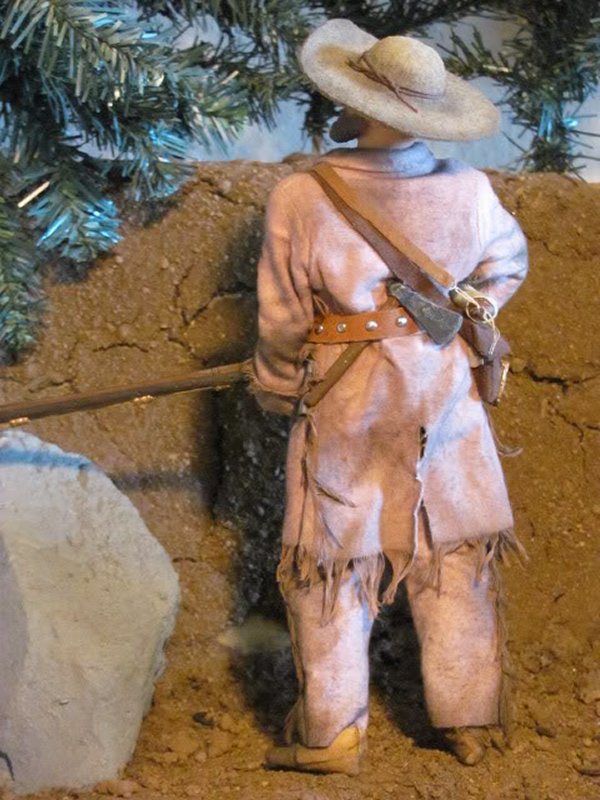
| Wow very cool figures my friend. You did a spectacular job on them. I really like the one in the brown the most though. I would have bought him if he was a mass produced boxed figure for certain. Of course not to say the other figures is some sort of slacker job either, he's mighty sharp looking too :) Special thanks for sending these cool Mountain Men in and sharing them with us, -- GL |

Back to the Photos